
The Land of the Leopard is considered the ‘most thickly cat-populated’ specially protected natural area (SPNA) in Russia - with good reason. After all, four species of wild cats inhabit the Land - the Amur leopard (Panthera pardus orientalis), Siberian (Amur) tiger (Panthera tigris tigris или Panthera tigris altaica), Eurasian lynx (Lynx lynx), and the Amur leopard cat (Prionailurus bengalensis euptilurus). This is a unique area in the southwest of the Primorsky Territory (Primorye area), which was not affected during the glacial period.
The Land of the Leopard FSBI (Federal State Budgetary Institution) consists of two SPNAs - the Kedrovaya Pad Nature Reserve and the Leopard Land National Park. These areas were united and they also have the same tasks, the main of which is the preservation and restoration of the world’s only population of the Amur leopards - the world’s rarest large cats that were on the verge of extinction until recently. Vsevolod Stepanitsky told the readers of EcoTourism Expert how they managed to save the magnificent animals. He is a traveller and naturalist who visited over 100 national parks around the world and almost all SPNAs in Russia, he was awarded the title of the Honoured Ecologist of Russia and is an Advisor to the Director General of the Amur Leopards Autonomous Non-Profit Organization.
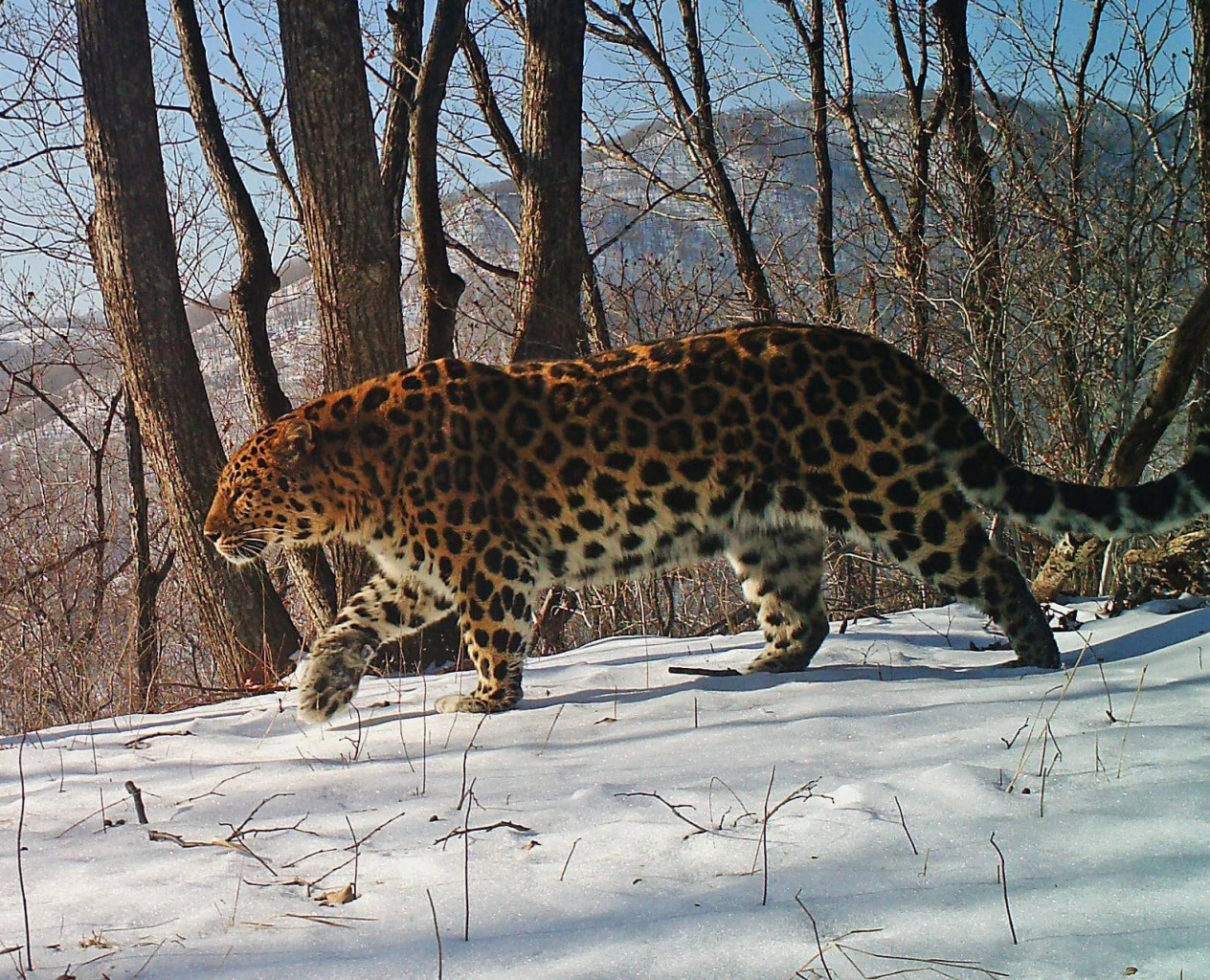
- A leopard and snow-covered taiga is a rather unusual combination. Are you often asked baffled questions?
- Not every person in our country who is not a professional zoologist knows that leopards live in Russia and inhabit their own special land. There is one species of leopards in the world, but it includes 9 subspecies that inhabit different parts of the world, and the Far East is the northernmost of them. In addition, the leopard is one of the rarest large cats in the world, and only the Asian cheetah (Acinonyx jubatus venaticus) is as rare as the leopard. Most of the unique species of flora and fauna characteristic of the southern latitudes have survived in the south of the Primorye area because the glaciers did not reach this region. The leopards are an awesome example of this, although we were very close to losing them.
- As always, did homo sapiens ‘contributed’ to this?
- People have a very direct bearing upon the extinction of many species of plants and animals. In the second half of the 19th century, the population of the Amur leopards was relatively large. Their habitat covered a significant part of the Primorsky Territory, the adjacent areas of China, Manchuria, and the Korean Peninsula. But from the beginning of the 20th century, the situation began to change not in favor of the magnificent cats. In the middle of the last century, they completely disappeared from the Korean Peninsula, at about the same time, people practically forced them out of Manchuria - so, the leopards remained only few in the border area with Russia. In Russia, the leopards disappeared from the southern Sikhote-Alin, northwest of the Primorsky Territory.
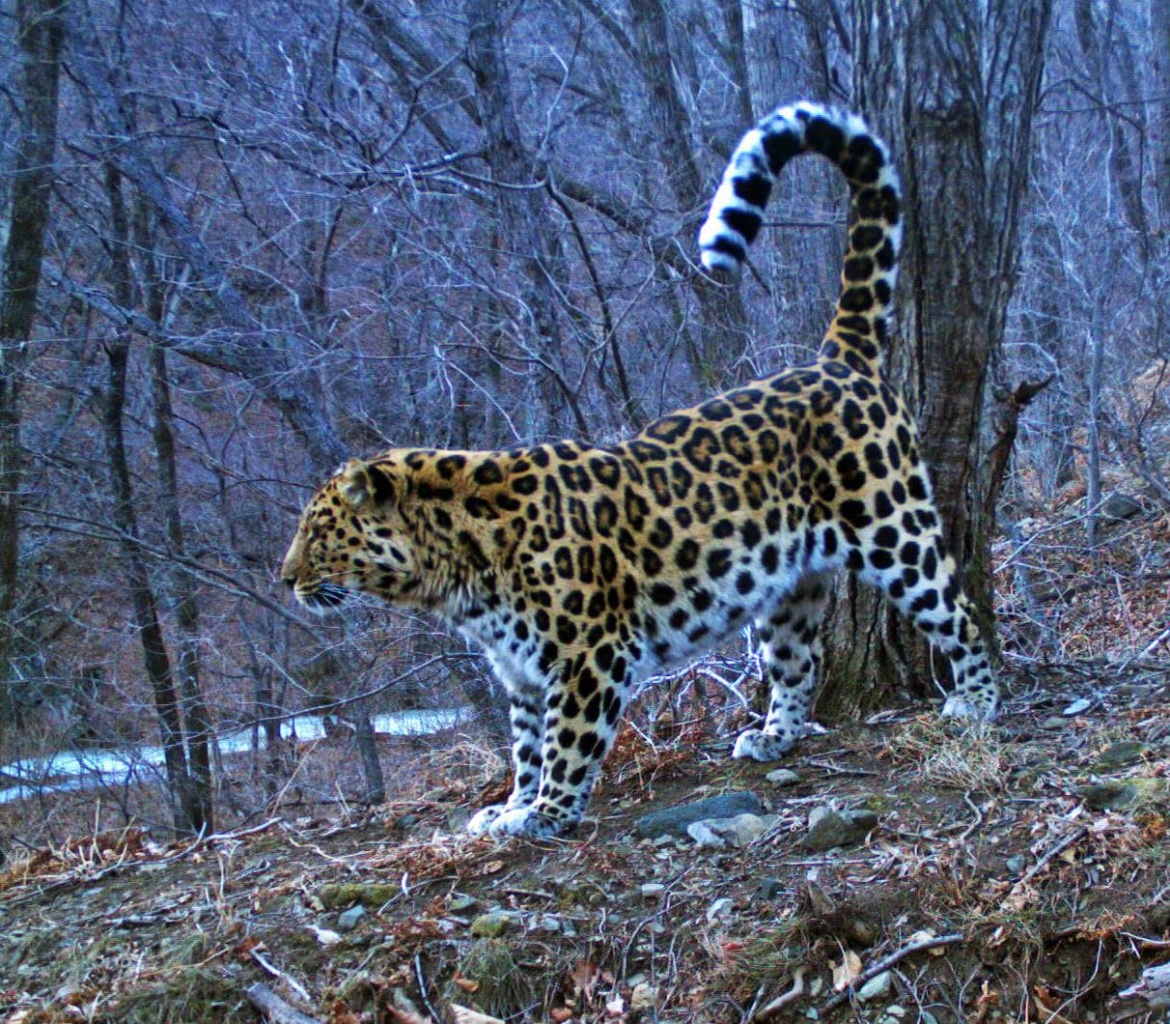
Today, the last refuge of the Amur leopard is, in fact, the southwest of the Primorsky Territory where about 100 adult leopards inhabit, as well as the adjacent part of China, with at least 10 of them. And that's all! The leopards inhabiting North Korea are not documented by experts in any way, although theoretically, they could be found there.
I can say the situation was much worse. About 20 years ago, the population of the Amur leopards fell to fifty individuals, the subspecies was on the verge of extinction. Of course, at that time, such advanced monitoring methods were not available and it can be assumed that there were slightly more of the Amur leopards, but still, the situation was extremely tense and rather alarming.
The key factors in the low number of the Amur leopard population are the death of the animals at the hands of humans, lack of the hoofed mammal resources being the leopards’ food base, the destruction and loss of habitats due to economic activities, deforestation, and the forest fires. As a result, the leopard’s habitat was shrinking steadily.

A special point is about killing the Amur leopards by humans. It should be understood that until 1956, the leopard was classified as a harmful animal - as was the term in the then hunting sector - and shooting the leopards was not limited by any regulations. In the south of the Primorsky Territory, hunters had a special motive to hunt and chase the leopards.
From the beginning of the 20th century and, in fact, until the end of the Soviet period, there was such a branch of agriculture in the southern Primorye area as a velvet antler industry. To obtain pantocrine, sika deer (Cervus nippon hortulorum) were bred in semi-free conditions in the reindeer parks, and they were no different from the wild ones. The leopards regularly visited these velvet antler deer farms, and, of course, the farm owners were not happy about their visits and ruthlessly exterminated the spotted predators. Dogs, traps, loops and poisons were used.
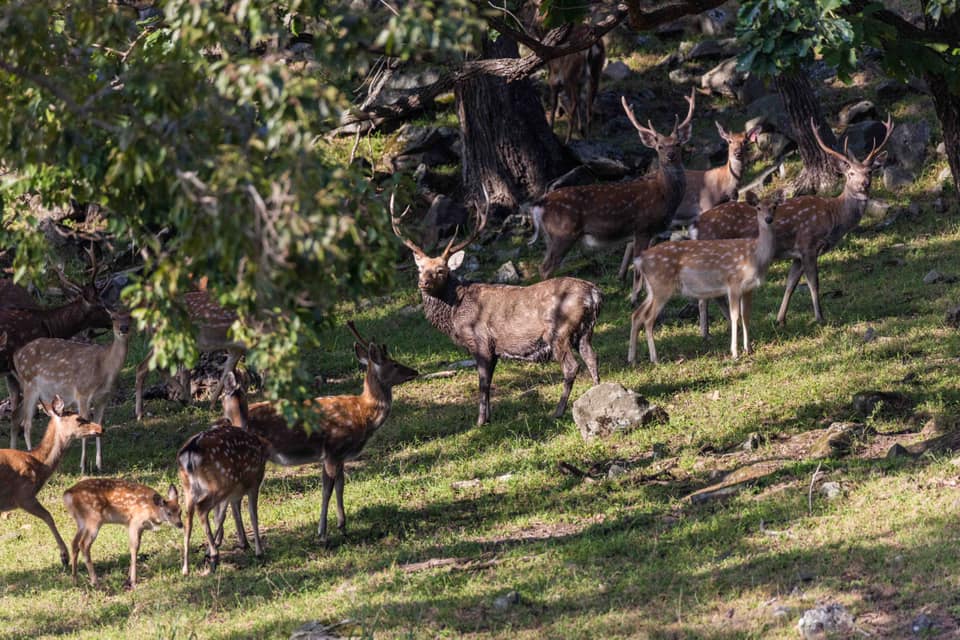
- The Kedrovaya Pad Nature Reserve, which is now part of the Land of the Leopard FSBI, was established in 1916 and is one of the oldest in Russia. However, leopard hunting was not banned until 40 years later. Why did it take so long to make this decision?
- It took so long due to the same economic reasons - the velvet antlers were valued higher and mattered more than the saving the lives of magnificent cats. At the beginning of the 20th century, many experts highlighted the need to do something about the protection of wildlife in the Primorye area. At that time, the professional scientific community, however, did not really care much about the fate of large predators, for various reasons.
The experts were worried about the destruction of the unique habitats - the famous Ussuri taiga. At the beginning of the last century, the Transsib Railway was built, Vladivostok developed into a powerful port for the trade with foreign countries, and the prerequisites were created for the destruction of the unique forest areas. The famous mixed coniferous-broad leaved forests in the south of the Far East - called the Ussuri taiga - were destroyed and the people witnessed all this. In 1910, the Slavyanskoe Forestry was set up to manage the state-owned lands in the southern Primorye area, which was headed by Theodor Grodetsky, a certified forester working at the Slavyansky forestry who initiated and made efforts to create the Kedrovaya Pad Nature Reserve in the southwestern Primorye area. It took 6 years to develop this project.
In 1934, on the initiative of Vladimir Leontievich Komarov, an outstanding Russian botanist, the President of the USSR Academy of Sciences, the Ussuriysky Reserve was established. It is located in the historical habitat of the Amur leopards, but in the 1980s, the leopards completely disappeared from this Reserve. Fortunately, the unique pristine Ussuri taiga survived, and sooner or later, it may again become the habitat of the Amur leopards if our efforts are successful in the Far East.
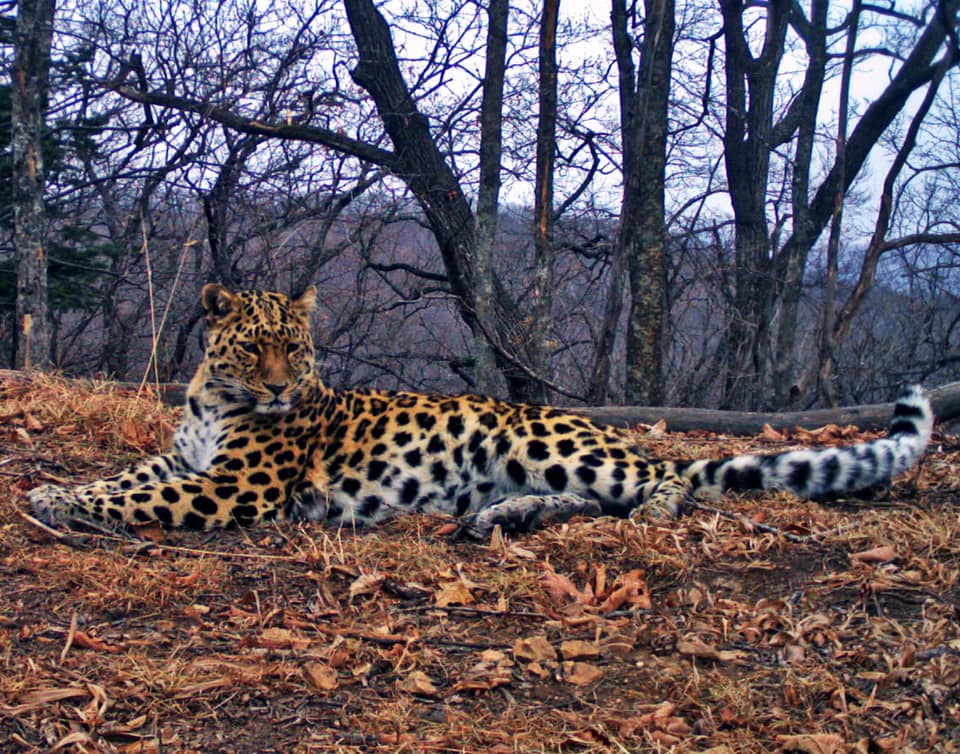
After the ban on hunting the leopards was introduced in 1956, this species moved from the category of the animals harmful to the agriculture to the category of the protected species. Our country was the first among the leopard habitat countries to take measures to preserve these animals. In 1966, a ban on the leopards’ trapping in the wild without a special permission was introduced. In 1978, the leopards were listed in the Red Book (of Threatened Species) of the USSR, in 1997 - in the Red Book of the Russian Federation.
However, for the preservation of similar animals, the comprehensive measures for the territorial protection of nature, for the creation of new special protected natural areas play the key role, of course. There were SPNAs in the Far East, but the situation had changed over the years. In 1979, the Barsovy Federal Reserve appeared, and in 1996, the Borisovskoye Plateau Regional Reserve was established.
- Why did you later need to unite the newly formed reserves and SPNAs?
- The unification was logical as they were adjacent to each other, but it was difficult for them to interact, since they belonged to different departments. For example, the Kedrovaya Pad Reserve belonged to the Academy of Sciences, the Barsovy Reserve was with the Ministry of Agriculture, and the Borisovskoe Plateau was governed by the Primorsky Territory authorities. Despite the difficulties, the measures taken excluded, at least, the possibility of the industrial development of these territories, which played a crucial role in saving the Amur leopards.
Finally, in 2008, the Leopard (Leopardovy) Wildlife Refuge was created, which included the Barsovy Reserve and Borisovskoye Plateau areas. The Kedrovaya Pad Nature Reserve was also transferred to the jurisdiction of the Ministry of Natural Resources of Russia. Thus, the entire SPNA complex adjacent to the state border and having a single management was in the hands of one environmental authority. In 2012, instead of the Leopard Wildlife Refuge, the Land of the Leopard National Park was created, but it was significantly expanded. Together with the Kedrovaya Pad Nature Reserve, its area was 280 thousand hectares. Later on in 2013, the National Park’s buffer zone was allocated, which was another 80 thousand hectares of the forests surrounding the Land of the Leopard. So gradually, such a huge complex of 360 thousand hectares was created to save the leopards and preserve their habitat.
Today, the Land of the Leopard FSBI carries out the management and the state supervision within the boundaries of a single natural and territorial complex that includes the Kedrovaya Pad Biosphere Reserve, the Land of the Leopard National Park and the buffer zone around it. This became a key factor in protecting the Amur leopards.
However, a big progress was made, the expansion of the National Park continues. So, last year, a separate cluster of 7,000 hectares was added on the Gamow Peninsula at a decaying reindeer herding farm, which was often visited by leopards. Now, the Amur leopards are not enemies of the deer at the farms, but they are long-awaited guests in this area, and all the activities of the nature conservation organizations in this area are aimed at maintaining a high density of the sika deer population here, so that the food is always sufficient for the Red Book cats.
At the end of last year, two more reserves, the Ussuriysky and the Far Eastern Marine ones, were transferred to the Land of the Leopard FSBI, part of which is adjacent to the new cluster of the Land of the Leopard on the Gamow Peninsula. Thus, this FSBI now manages four sites, three of which are of great importance for the future of the Amur leopards.
- Probably, the Marine Reserve is not the most promising object for the protection of the land species - the leopard?
- It was necessary to join it to ensure an integrated approach to the development of the SPNA network and the preservation of the biological and landscape diversity in the south-west of the Primorye area. This move has been made, and it is very important!
All these protected areas were united not only to protect the leopards, but the entire natural complex of these places. The Land of the Leopard is an integral part of the Amur ecological region - a zone of mixed forests of the Manchurian floristic province. As for the rich biological diversity in Russia, tis area can only be compared with the Caucasus.
This is home not only to the Amur leopards, but also to the Amur tigers. At the beginning of 2020, 91 adult Amur leopards and 31 Amur tigers were recorded within the boundaries of the Land of the Leopard. This is one of the largest groups of tigers in the protected areas, slightly inferior only to the Bikin National Park in the north of the Primorsky Territory. But the Bikin National Park has a huge territory of 1.2 mn hectares.
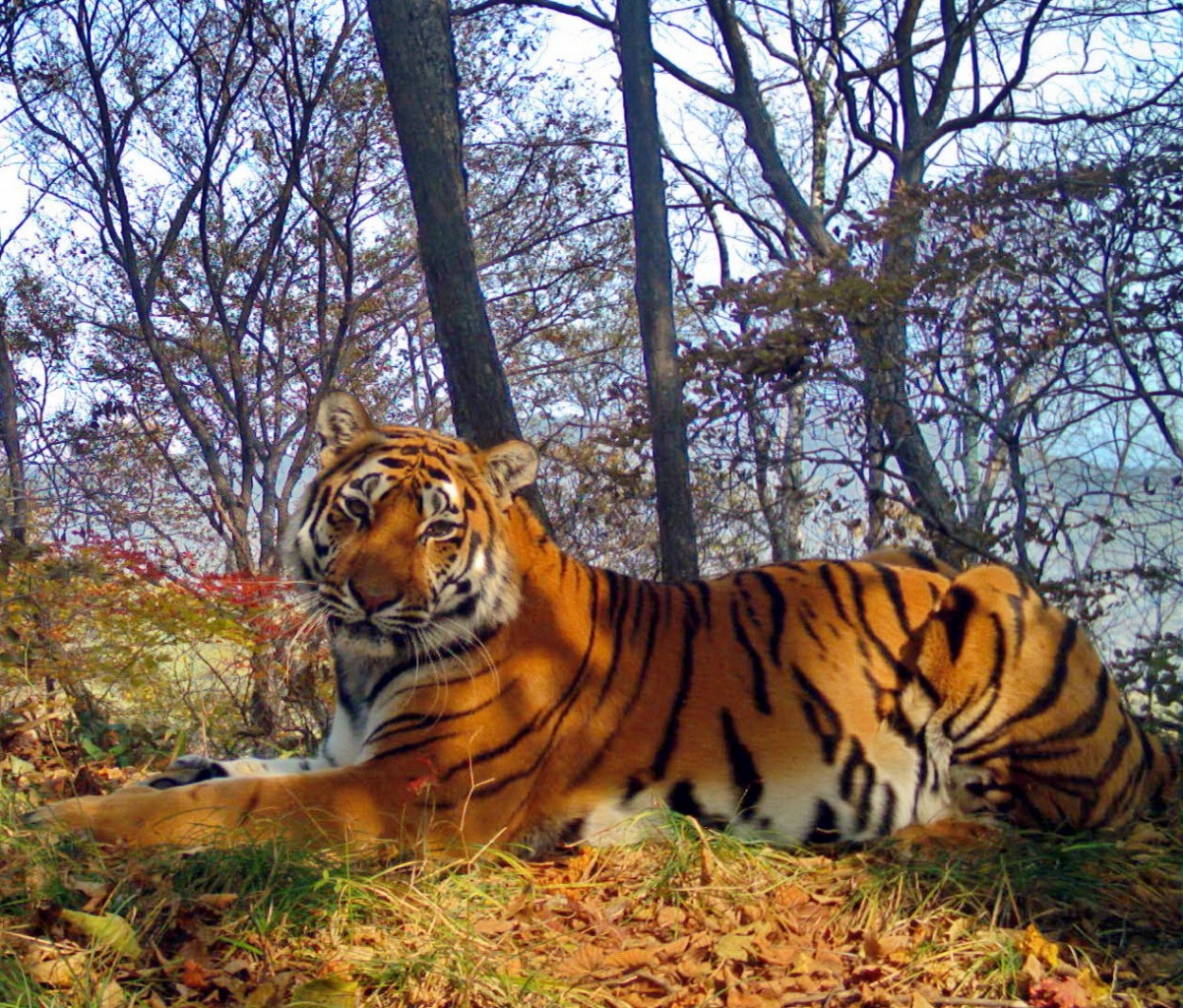
- How were and are such serious predators recorded?
- We have a network of 400 automatic camera traps. This is the largest network of the photomonitoring cameras in the Russian protected areas. Each leopard or a tiger captured by a camera trap is entered into a database and has its own identification number. The database help to put together a detailed ‘dossier’ for each animal - with photos and videos, the results of counting based on the tracks in the snow, field observations and other useful information. The skin patterns of leopards and tigers are like human fingerprints, each individual has its own special pattern of spots and stripes. There are no two leopard skin patterns alike as each is very specific and individual and it can help you identify every animal if it has already been recorded, or add a newcomer to the database and make a certificate for every animal.
This monitoring activities helped to make a fair conclusion - the situation with the Amur leopards is no longer critical, their population is growing gradually, they begin to inhabit the areas they left in the last century, and this is very promising.
- What other animals inhabit these areas?
- Our Earth is rich not only in leopards and tigers! There are 265 species of vertebrates, 1,918 species of plants and almost 1,914 species of mushrooms! Of these, 59 species of animals are listed in the Red Book of Russia, as well as 58 species of plants and 9 species of mushrooms. The common goral (Nemorhaedus goral) and mandarin duck (Aix galericulata), black vulture (Aegypius monachus) and white-tailed eagle (Haliaeetus albicilla), Japanese yew (Taxus cuspidate), ginseng (Panax ginseng) - all these are rare, endangered species, subspecies and populations, many of them can be seen only in our region.
It is also home to many hoofed mammals - sika deer, roe deer, musk deer - and the wild boars, which form the basis of the food supply for the large ‘cats’. Last year, we got a species of fauna new for Russia such as water deer (Hydropotes inermis), which most likely migrated from Korea, according to our assumptions. These are unique animals looking like roe deer with fangs and cannot be mixed up with anyone else. Previously, it was not documented that these animals inhabit any areas in Russia, and suddenly, there appeared about 170 water deer at once - such a pleasant surprise! This is interesting and useful from the point of view of the biodiversity preservation, and the leopards and tigers have extra hoofed mammals as their food!

There are other predators interested in this news - we have recorded about 139 Himalayan black bears and 50 brown bears, lynxes and Amur leopard cats, Amur badgers and raccoon dogs, as well as large yellow-throated martens characteristic of the tropics. Personally, I saw the large yellow-throated martens in the wild only on the island of Borneo and it was exactly the same species that inhabits the south of the Primorye area.
However, the medium-sized predators can themselves be eaten by the leopards and tigers, so this is an additional food base.
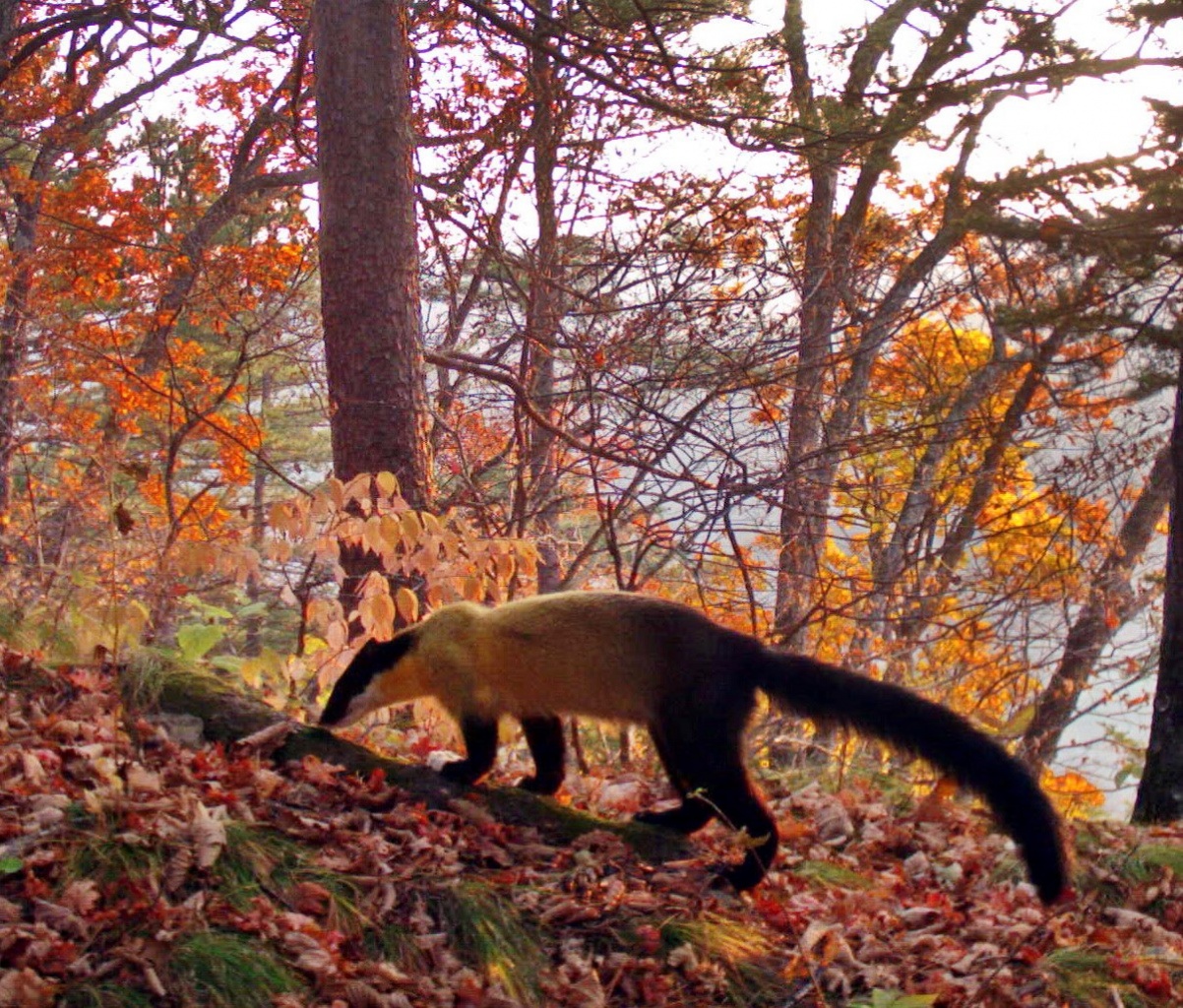
- How do large cats, predators, live together?
- The smaller ones practically do not come in contact with each other, they have different interests. But a couple of larger cats are in a difficult demographic situation and also compete with each other, these are the so-called sympatric species whose ecological niches are largely the same. The Amur tigers are the largest cats in the world, the weight of an adult male can reach 220 kg, but the leopards weigh three times less, so one would think that they could not avoid problems.
However, the mechanisms formed in the course of the evolution help the leopards coexist with larger and more severe neighbours. The results of our observations also show this. In recent years, not a single case has been identified when a striped predator purposefully ‘hunted down’ a spotted animal for a long time. Moreover, over the past 10 years of our intensive observations with the use of up-to-date technical means, not a single case of a leopard torn to pieces by a tiger has been recorded.
This is due to differences in the manner of moving and hunting. The tigers avoid steep slopes, rough terrain along the rivers where the leopards feel great. The spotted cats like rocks, crevices where they can shelter a cub, and besides, they climb up the trees very well. The first thing they do when meeting a tiger is climbing up a tree and thereby avoiding a direct collision, in which they have no chance to get out alive.
In addition, their food preferences also differ. The tigers are very picky about their food. Paradoxically, they prefer wild boars, despite the fact that we have more sika deer - about 22,000-24,000 animals. There are about 6 thousand wild boars, and it seems that the tigers prefer ‘pork’. But the leopards are not inclined to hunt such a strong and dangerous animal, and roe deer or deer are the best choice for leopards.
So, the tigers have not eaten the leopards in all millennia, nor will they eat these animals now. They can quite peacefully coexist within the same area, and will continue so if people do not interfere with them.
- What are the priorities of the Land of the Leopard FSBI at present?
- The priorities are few, but the tasks are ambitious. These include maintaining the effective anti-poaching measures. Hunting, especially poaching, is no longer the factor that can significantly affect the leopard population, but we should not relax.
Of course, the prevention of wildfires is very important, the disasters of the southwestern Primorye area where the forests and areas overgrown with grass and shrubs burn every year. Our Security Service today is very qualified in the fire prevention and fire fighting.
A continuous task remains to carry out the biotechnical measures to maintain a high number of the hoofed mammals serving as the food for the leopards and tigers. We must also do preparations for sudden snowfalls that happen here every few years, but they can ‘kill’ thousands of deer and roe deer overnight and the predators could suffer from hunger.
It is necessary to raise funding for the construction of special crossings (eco-ducts) at the places where the leopards cross the roads. In 2016, the first ecological tunnel in Russia was commissioned as part of the reconstruction of the Khasan-Razdolnoye highway, which divides the area between the Land of the Leopard National Park and the Kedrovaya Pad Nature Reserve. The animals cross the road over the tunnel, along its upper part, already overgrown with forest. The observations confirmed that the animals no longer cross the highway in front of the veneeded in many places, otherwise the habitat is fragmented, cut by roads, which has a bad effect on the general state of the animals’ population.
I have already mentioned that it is important to expand the network of SPNAs and their buffer zones. This is the most important for the guaranteed preservation of the large predators’ population.
We also plan to start restoring the leopard population in some areas of its lost historical habitat, for example, in southern Sikhote-Alin on the basis of the Lazovsky Nature Reserve; such a possibility is being discussed for the Ussuriysky Nature Reserve.
Of course, it is extremely important to develop the Russian-Chinese co-operation within the framework of the creation of the Land of Big Cats Transboundary Nature Reserve. Historically, the key habitats for these big cats, which are very sensitive to the snow cover, have been in China where the climate is warmer. Almost all the leopards were hunted to extinction there. But today, the country’s leadership took the decision to create the North-Eastern National Tiger and Leopard Park with a huge area of 1.5 mn hectares. It borders on the Russian SPNAs, and in many respects, the fate of the Russian Amur leopards depends on the attitude of the Chinese environmental services, their attitude to the co-operation.
And, of course, the development of the ecological tourism is of prime importance. The world experience and practice say that this activity, if properly organized, is fully compatible with preserving the biological and landscape diversity. And if we approach this in a proper way, who knows, maybe the guests coming to the Land of the Leopard can take a photo of the Amur leopards, as beautiful as the photos the tourists take from the jungle jeeps in the Maasai Mara Nature Reserve of Kenya, which is part of the Serengeti National Park.
By the way, the Land of the Leopard project was one of the winners of the All-Russian competition for the creation of tourist and recreational clusters and the development of ecotourism.
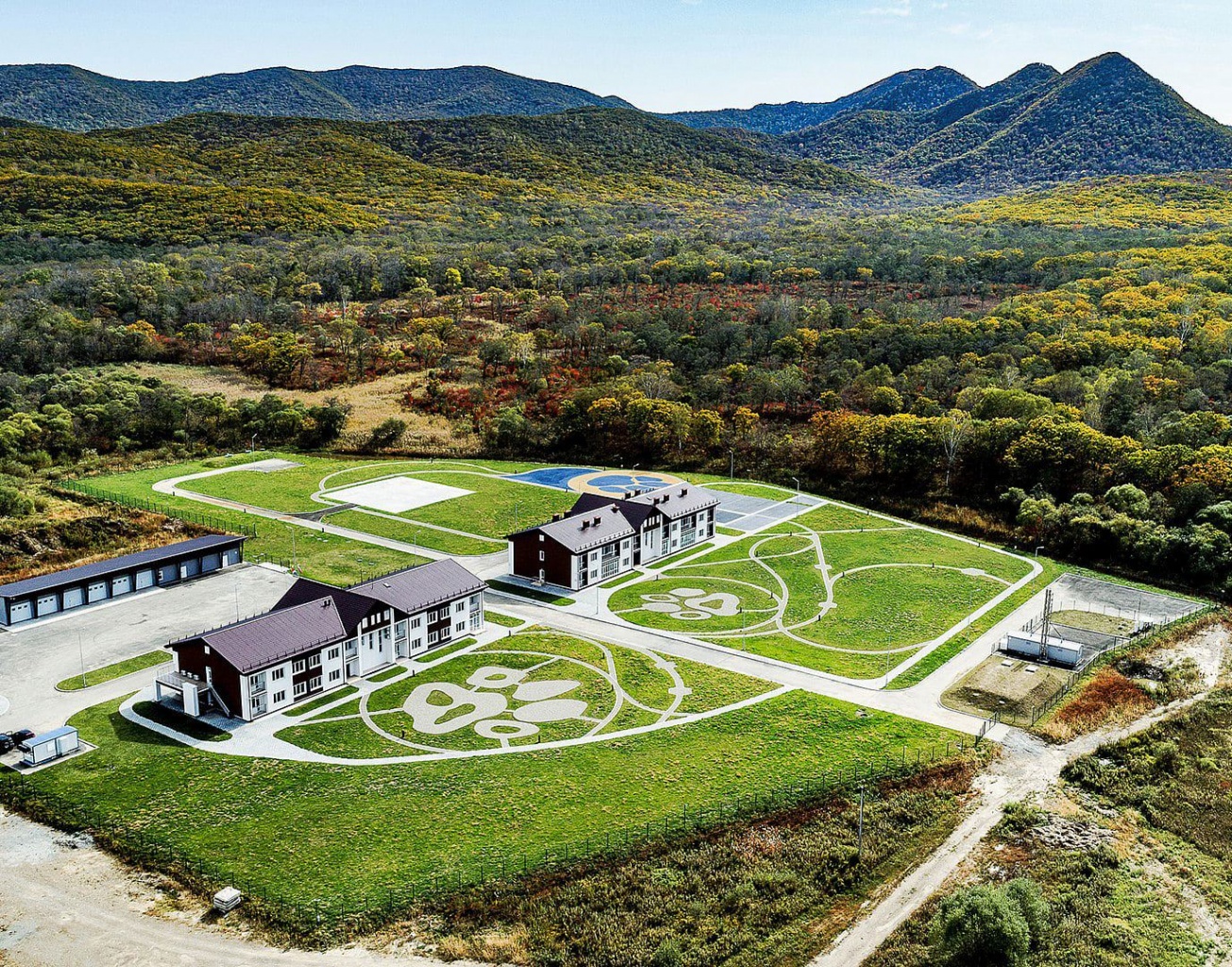
It provides for the comprehensive development of the Khasansky municipal district where the Land of the Leopard National Park, the Kedrovaya Pad Nature Reserve, the Far Eastern Marine Reserve, the Khasansky Nature Park, and the Yasnoye health and recreation area are located. The main task is to create conditions in the south-west of the Primorye area for the ecological tourism development, such as the arrangement of the popular natural, historical and cultural sites, reduction of the recreational load on them through the tourist flow redistribution, development of common approaches and rules for organizing the ecotourism not only within the boundaries of the SPNAs but also in the adjacent regions.
We will also work on increasing the number of the tourist trails, we can offer now some birdwatching trails, hideout sites for taking pictures of the predators where you can comfortably stay for a couple of weeks and take amazing pictures of the beautiful birds and the animals. If during a short visit to the Land of the Leopard you were not lucky enough to see its ‘owner’, don’t feel bad! Just be sure that the Amur leopard has seen YOU!
